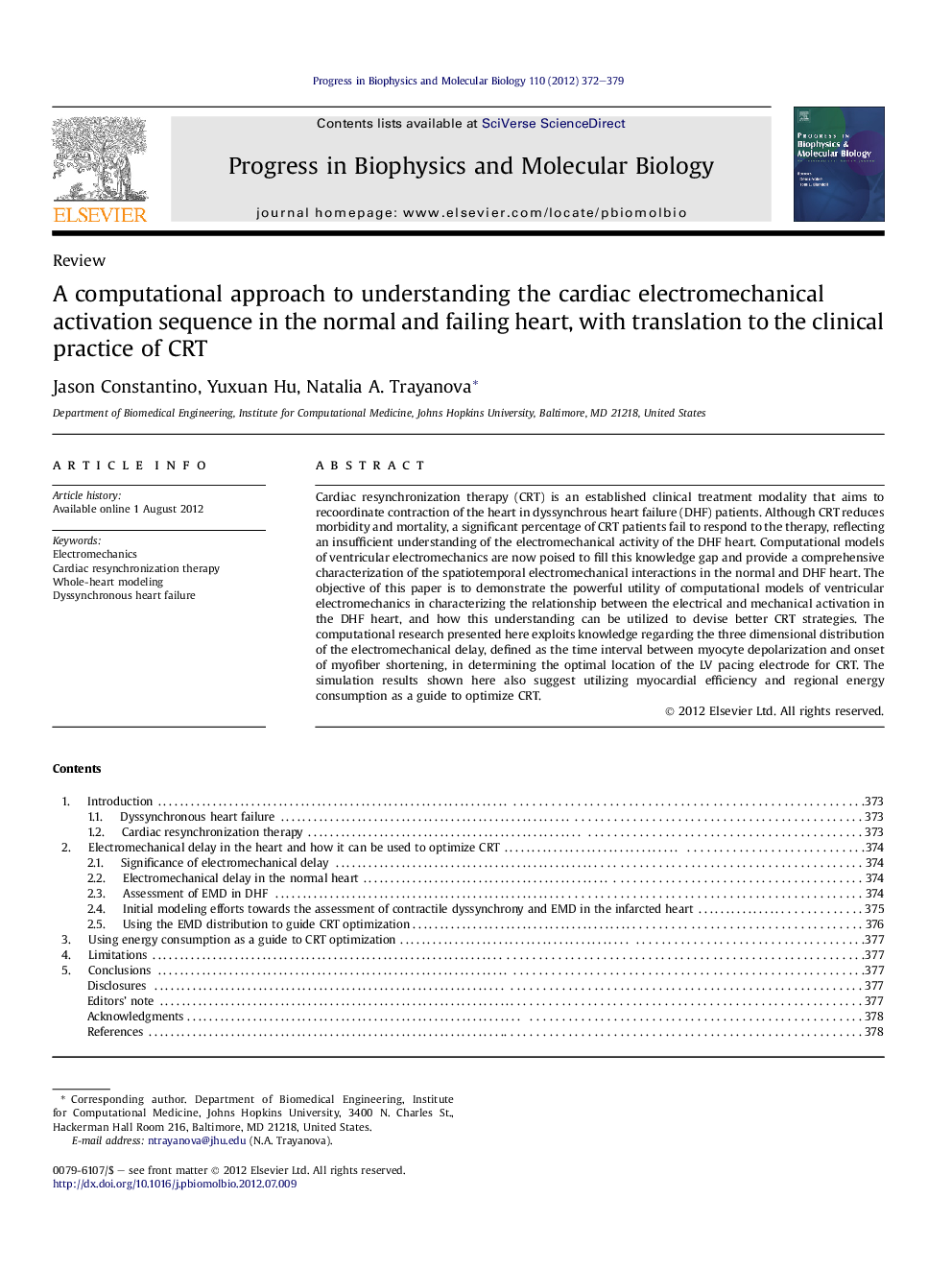| کد مقاله | کد نشریه | سال انتشار | مقاله انگلیسی | نسخه تمام متن |
|---|---|---|---|---|
| 8401512 | 1544484 | 2012 | 8 صفحه PDF | دانلود رایگان |
عنوان انگلیسی مقاله ISI
A computational approach to understanding the cardiac electromechanical activation sequence in the normal and failing heart, with translation to the clinical practice of CRT
دانلود مقاله + سفارش ترجمه
دانلود مقاله ISI انگلیسی
رایگان برای ایرانیان
موضوعات مرتبط
علوم زیستی و بیوفناوری
بیوشیمی، ژنتیک و زیست شناسی مولکولی
بیوفیزیک
پیش نمایش صفحه اول مقاله

چکیده انگلیسی
Cardiac resynchronization therapy (CRT) is an established clinical treatment modality that aims to recoordinate contraction of the heart in dyssynchrous heart failure (DHF) patients. Although CRT reduces morbidity and mortality, a significant percentage of CRT patients fail to respond to the therapy, reflecting an insufficient understanding of the electromechanical activity of the DHF heart. Computational models of ventricular electromechanics are now poised to fill this knowledge gap and provide a comprehensive characterization of the spatiotemporal electromechanical interactions in the normal and DHF heart. The objective of this paper is to demonstrate the powerful utility of computational models of ventricular electromechanics in characterizing the relationship between the electrical and mechanical activation in the DHF heart, and how this understanding can be utilized to devise better CRT strategies. The computational research presented here exploits knowledge regarding the three dimensional distribution of the electromechanical delay, defined as the time interval between myocyte depolarization and onset of myofiber shortening, in determining the optimal location of the LV pacing electrode for CRT. The simulation results shown here also suggest utilizing myocardial efficiency and regional energy consumption as a guide to optimize CRT.
ناشر
Database: Elsevier - ScienceDirect (ساینس دایرکت)
Journal: Progress in Biophysics and Molecular Biology - Volume 110, Issues 2â3, OctoberâNovember 2012, Pages 372-379
Journal: Progress in Biophysics and Molecular Biology - Volume 110, Issues 2â3, OctoberâNovember 2012, Pages 372-379
نویسندگان
Jason Constantino, Yuxuan Hu, Natalia A. Trayanova,